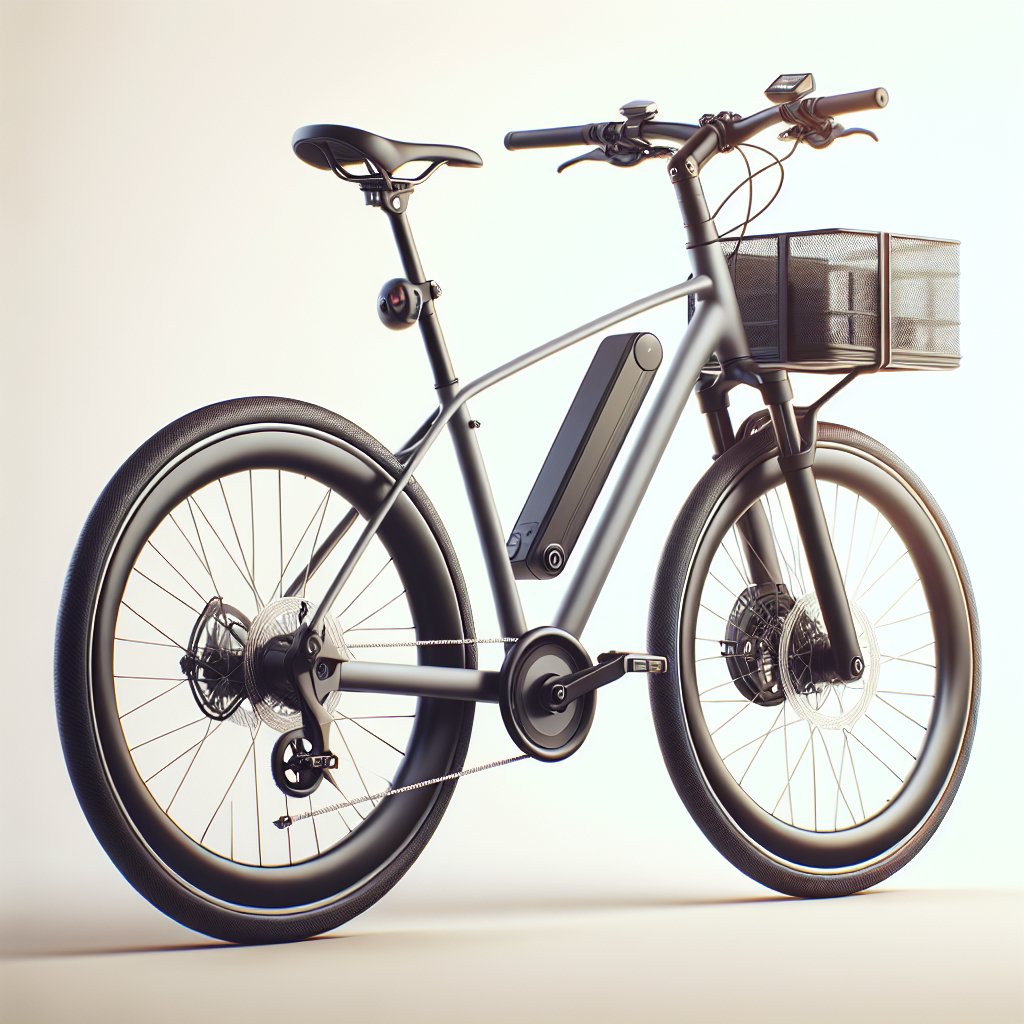Commuter bicycles have become an essential mode of transportation for many urban dwellers. With the increasing focus on sustainability and the need to avoid traffic congestion, finding the perfect ride for daily travel is more important than ever. This article delves into the various types of commuter bicycles, their features, and how to choose the best one for your needs.
Types of Commuter Bicycles
When it comes to commuter bicycles, there is no one-size-fits-all solution. Different types of bikes cater to different needs and preferences. Here, we explore the most common types of commuter bicycles and their unique features.
Hybrid Bicycles
Hybrid bicycles are a popular choice for commuters due to their versatility. They combine features from both road and mountain bikes, making them suitable for a variety of terrains. Hybrids typically have a comfortable upright riding position, which is ideal for city commuting. They also come with wider tires than road bikes, providing better stability and comfort on uneven surfaces.
- Pros: Versatile, comfortable, good for mixed terrains.
- Cons: Heavier than road bikes, not as fast.
Road Bicycles
Road bicycles are designed for speed and efficiency on paved surfaces. They have lightweight frames, narrow tires, and drop handlebars that allow for an aerodynamic riding position. While they are excellent for covering long distances quickly, they may not be the best choice for rough or uneven city streets.
- Pros: Fast, lightweight, efficient on paved roads.
- Cons: Less comfortable on rough surfaces, less versatile.
Folding Bicycles
Folding bicycles are perfect for commuters who need to combine cycling with other forms of transportation, such as trains or buses. These bikes can be easily folded and carried, making them convenient for storage in small apartments or offices. Despite their compact size, many folding bikes offer a comfortable and efficient ride.
- Pros: Portable, easy to store, convenient for mixed-mode commuting.
- Cons: Generally heavier and less efficient than non-folding bikes.
Electric Bicycles
Electric bicycles, or e-bikes, have gained popularity among commuters for their ability to make longer or more challenging rides easier. E-bikes come with a battery-powered motor that assists with pedaling, reducing the effort required to travel. This makes them an excellent option for those with longer commutes or hilly routes.
- Pros: Easier to ride, great for long distances and hills, reduces physical strain.
- Cons: More expensive, heavier, requires charging.
Key Features to Consider
Choosing the right commuter bicycle involves considering several key features that will impact your riding experience. Here are some important factors to keep in mind:
Frame Material
The frame material of a bicycle affects its weight, durability, and ride quality. Common materials include aluminum, steel, carbon fiber, and titanium.
- Aluminum: Lightweight, affordable, and resistant to rust. However, it can be less comfortable on rough roads due to its stiffness.
- Steel: Durable and provides a smooth ride. It is heavier than aluminum but offers better shock absorption.
- Carbon Fiber: Extremely lightweight and strong, offering excellent ride quality. However, it is more expensive and less durable than other materials.
- Titanium: Combines the best qualities of aluminum and steel, being both lightweight and durable. It is also the most expensive option.
Gearing
The number of gears on a bicycle determines how well it can handle different terrains and inclines. Commuter bikes typically come with a range of gearing options:
- Single-Speed: Simple and low-maintenance, ideal for flat terrains.
- Multi-Speed: Offers a range of gears to tackle various inclines and terrains. More versatile but requires more maintenance.
Brakes
Brakes are crucial for safety and control. The two main types of brakes found on commuter bicycles are rim brakes and disc brakes.
- Rim Brakes: Lightweight and easy to maintain, but less effective in wet conditions.
- Disc Brakes: Provide better stopping power and performance in all weather conditions, but are heavier and more complex to maintain.
Tires
The type of tires on your commuter bike will affect its performance and comfort. Consider the following options:
- Slick Tires: Smooth and fast on paved roads, but less grip on wet or uneven surfaces.
- Semi-Slick Tires: A good compromise between speed and grip, suitable for mixed terrains.
- Knobby Tires: Provide excellent grip on rough or off-road surfaces, but slower on paved roads.
Choosing the Right Size
Ensuring that your bicycle is the right size is crucial for comfort and efficiency. A bike that is too small or too large can lead to discomfort and even injury. Here are some tips for finding the right size:
Frame Size
The frame size is typically measured in inches or centimeters and corresponds to the length of the seat tube. Most manufacturers provide size charts based on your height and inseam measurement. It’s important to test ride a bike to ensure it feels comfortable and fits well.
Saddle Height
The saddle height should be adjusted so that your leg is almost fully extended at the bottom of the pedal stroke, with a slight bend in the knee. This will help you pedal efficiently and reduce strain on your knees.
Handlebar Position
The handlebar position should allow for a comfortable reach without straining your back or shoulders. An upright position is generally more comfortable for commuting, while a more aggressive position can be more efficient for longer rides.
Maintenance and Accessories
Regular maintenance and the right accessories can enhance your commuting experience and ensure your bike remains in good condition. Here are some essential tips and accessories to consider:
Regular Maintenance
Keeping your bike in good working order is essential for safety and performance. Regular maintenance tasks include:
- Cleaning: Regularly clean your bike to remove dirt and grime, especially from the drivetrain.
- Lubrication: Lubricate the chain and other moving parts to ensure smooth operation and prevent rust.
- Tire Pressure: Check and maintain the correct tire pressure to avoid flats and ensure a smooth ride.
- Brake and Gear Adjustment: Regularly check and adjust your brakes and gears to ensure they are functioning properly.
Essential Accessories
Adding the right accessories to your commuter bike can improve safety, comfort, and convenience. Consider the following:
- Lights: Front and rear lights are essential for visibility, especially if you ride in low-light conditions.
- Helmet: A good-quality helmet is crucial for safety.
- Lock: A sturdy lock is essential to protect your bike from theft.
- Fenders: Fenders can help keep you dry and clean by preventing water and mud from splashing up.
- Rack and Panniers: A rack and panniers can provide convenient storage for your belongings, making it easier to carry items without a backpack.
Conclusion
Finding the perfect commuter bicycle involves considering various factors, including the type of bike, key features, size, and necessary accessories. By understanding your specific needs and preferences, you can choose a bike that will make your daily commute more enjoyable and efficient. Whether you opt for a versatile hybrid, a speedy road bike, a convenient folding bike, or an assisted e-bike, the right choice will enhance your commuting experience and contribute to a healthier, more sustainable lifestyle.












